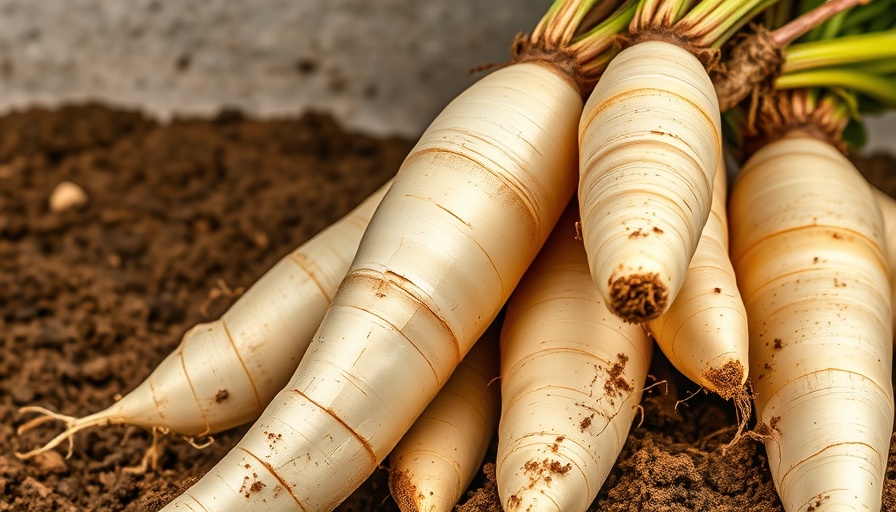
Understanding the Importance of Harvesting Horseradish Correctly
Horseradish, often overlooked but increasingly popular among culinary enthusiasts, offers a unique blend of flavor and health benefits. Eating horseradish can be a delightful culinary experience whether it adds zest to a steak or provides an immune boost through its antioxidant properties. However, knowing how to harvest this tough root properly is key to making the most of its spicy kick.
The Best Time to Harvest Horseradish for Optimal Flavor
Your horseradish roots should ideally be harvested after the first hard frost. This cold snap encourages the plant to store more sugars and starches, leading to a more potent and flavorful root. Experts like Carol Waters and Elizabeth Ann Wahle emphasize that if harvested too early, you risk losing flavor, which can be disappointing for those who eagerly await this seasonal delicacy.
Fall is generally recommended as the prime time for harvesting before the soil freezes. For those with patience, it’s a rewarding process—typically, horseradish roots are ready about a year after planting. But how do you know when it’s time? There are limited visual cues; the best approach is to rely on your planting calendar and seasonal changes.
Mastering the Harvesting Technique
Unlike many other vegetables that grow from seeds, horseradish propagates from its primary root. This unique growing pattern means that harvesting requires specific techniques. While large-scale producers may use mechanical methods, many home gardeners will benefit from manual digging.
A garden fork is commonly recommended for manual harvesting. Digging around a foot from the base of the plant helps to loosen the soil without fracturing the roots. Avoiding breaks in the roots is crucial to preserve their quality; thus, digging gently is the way forward. Once extracted, the larger offshoot roots should be saved for replanting to ensure sustained harvests in future years.
Dos and Don’ts When Harvesting Horseradish
To ensure you get the most out of your horseradish harvest, follow these expert-approved tips:
- Do: Cut the roots cleanly across at the top and slope towards the bottom. This will facilitate easier replanting.
- Don’t: Rush. Take your time to handle the roots with care to avoid damage.
- Do: Store fresh roots in sealed plastic bags in the refrigerator for short-term use, or use moist sand in a root cellar for longer storage.
- Don’t: Ignore the roots above eight inches—those are ideal for replanting. Discarding smaller roots might affect future plants.
Future Insights: Why Harvesting Well Matters
As homeowners in Folsom and El Dorado Hills increasingly embrace gardening and DIY projects, understanding the significance of quality produce becomes paramount. Properly harvested horseradish not only enhances your culinary dishes but also acts as a nutritional booster. It’s wise to invest the time and effort into mastering the harvesting process; it pays dividends in taste and health benefits.
Common Misconceptions about Horseradish
One common misconception is that horseradish is extremely difficult to grow. While it may seem daunting at first, it’s relatively low-maintenance in the right conditions. With the correct insights and techniques, anyone can integrate this root vegetable into their garden. Another misconception is that all horseradish is spicy. The heat level can vary significantly depending on when it's harvested and how it's handled.
Conclusion: Embrace the Power of Homegrown Flavors
Harvesting horseradish correctly opens the door to a bold and flavorful addition to your meals. Whether you choose to enjoy horseradish as a condiment or supplement, growing and harvesting your own may lead to culinary surprises. Remember, the quality of your horseradish roots depends on how well you harvest and store them. So dive into your garden this fall and experience the satisfaction of reaping your own rewards. Explore local gardening workshops or resources to learn more about maximizing your gardening efforts!
 Add Row
Add Row  Add
Add 




Write A Comment